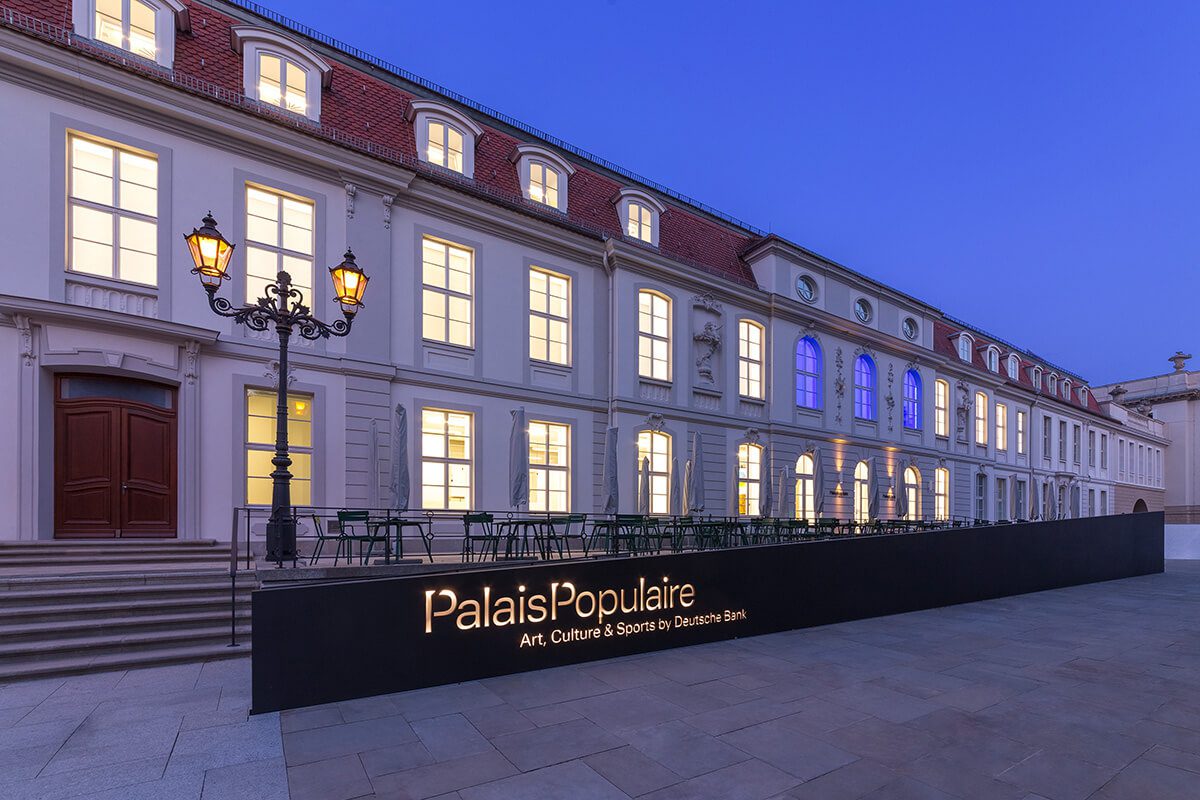
The exterior of Deutsche Bank’s PalaisPopulaire, the new Berlin home for its art collection. Opposite: Lohe (1994) by NeoRauch, included in the exhibition ‘The World on Paper’
Spearheaded by the recent opening of Deutsche Bank’s ambitious PalaisPopulaire, new developments are rapidly placing Berlin at the centre of the contemporary art world. Catherine Hickley reports on an extraordinary cultural transformation including the new public home of the German bank’s celebrated art collection and the vast new Humboldt Forum
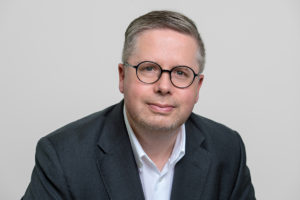
Thorsten Strauß, Global Head of Art, Culture & Sports at Deutsche Bank
A vibrant, edgy subculture, a liberal reputation and an understated, dilapidated flair have all contributed to Berlin’s status as the world’s most important centre for contemporary art production after New York. The German capital is home to more than 8,000 artists, with big names such as Ai Weiwei, Olafur Eliasson and Alicja Kwade among those who have set up studios there. In fact, more than half of the city’s five million visitors a year say they come for art and culture, and there’s certainly plenty to keep them busy, with world-class art collections, three opera houses, legendary night-clubs such as Berghain, a globally renowned film festival, an orchestra many consider to be the best in the world, dozens of theatres and a lively gallery scene. And slowly, years of building work and construction are making way for a historic centre that visitors and Berliners alike can enjoy.
Follow LUX on Instagram: the.official.lux.magazine
Nearly 30 years after the Berlin Wall came down, the city is also shedding its reputation as a capital of the ‘alternative’ (in everything from culture to business) to become a leader in its own right. The German government’s Exzellenzstrategie, announced in 2018, will pump huge sums over decades into the city’s universities and learning institutions. Britain’s departure from the European Union will create an even more powerful political momentum directed towards the city of Alexanderplatz and the Brandenburg Gate. A new international airport, now scheduled to open in 2021 (after years of very un-German delays), will bring world-class international links to the city, and lift its position from the second division of international airline destinations.
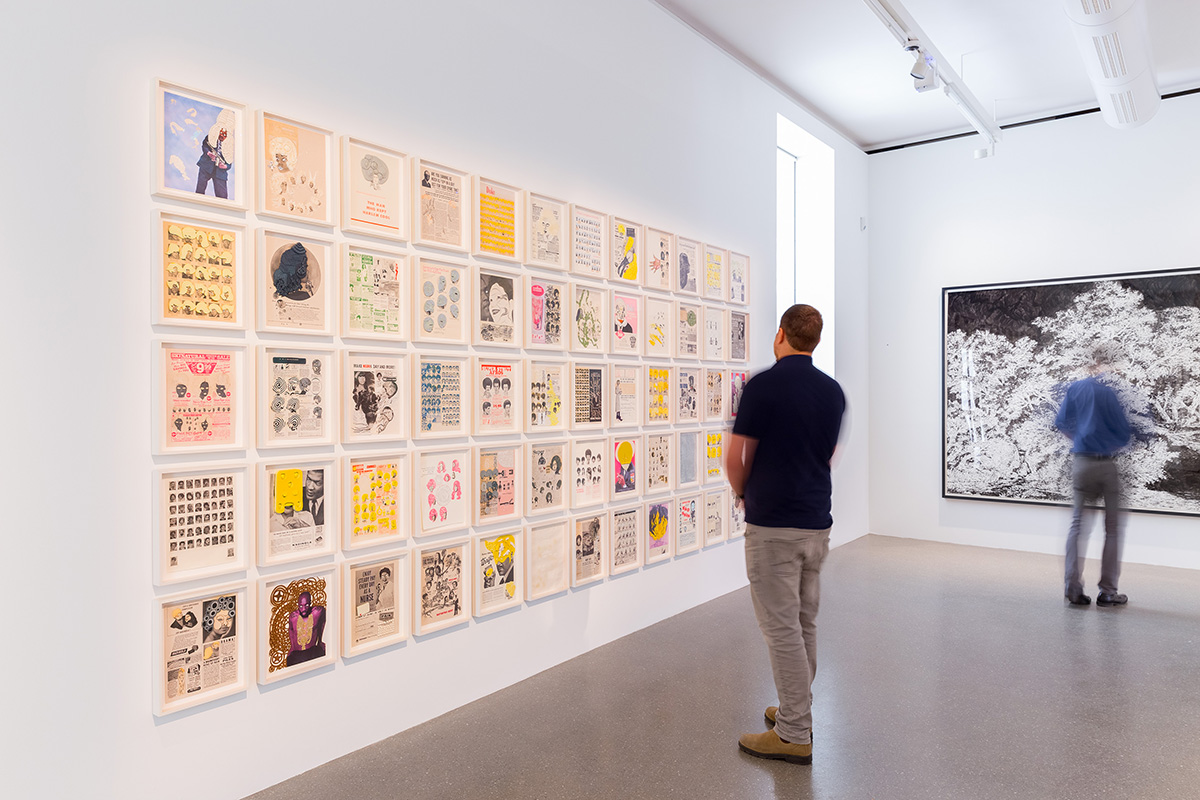
Deutsche Bank’s exhibition ‘The World on Paper’ at the PalaisPopulaire, 2018, with works by Ellen Gallagher and Ugo Rondinone
The opening of the PalaisPopulaire on the prestigious Unter den Linden boulevard in the heart of the city in September 2018 is an important landmark in the cultural ascendancy of the city to the highest global level. The new museum and cultural space are owned by Deutsche Bank, which has a vast corporate collection comprising 55,000 works; a total of 133 artists from 34 countries are represented, with an emphasis on works on paper produced after 1945. Much of the collection adorns the walls of the bank’s offices – but the bank has never had space to display it all, and some of the works have never or only rarely been shown. Artists include luminaries such as Gerhard Richter, Joan Mitchell, Sigmar Polke, Andy Warhol, Bruce Nauman, James Rosenquist, Joseph Beuys, Anish Kapoor and Bridget Riley.
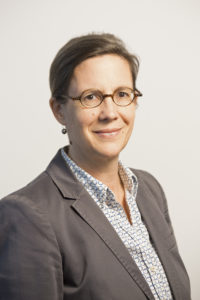
Svenja von Reichenbach, Head of PalaisPopulaire Deutsche Bank AG
These artists are all included in the debut exhibition, ‘The World on Paper’, which opened in September with works from the Deutsche Bank collection. But the PalaisPopulaire aims to be more than just a home for one of the largest corporate art collections in the world. The team behind it is hoping to add fuel to Berlin’s creative fire with a future-oriented arts and sports hub hosting talks, concerts, readings, workshops for children, young people and adults, a restaurant and a shop. “This is not a private house for a small select group, it is open to all Berliners and to guests from all over the world,” says Svenja von Reichenbach, the director of the PalaisPopulaire. “We want it to be a lively place. We don’t want to be a dusty old institution. We view ourselves as an open house that thrives on momentum from its visitors.”
Read more: Bicester Village launches a colourful new spring campaign
Before opening the PalaisPopulaire, the bank had the Deutsche Bank KunstHalle nearby on Unter den Linden, which it operated with the Guggenheim Museum until 2013. The PalaisPopulaire represents a threefold increase in exhibition space and will allow the corporate collection to be on permanent public display for the first time. “Deutsche Bank has a rich history of supporting and engaging with contemporary art, particularly in Berlin,” comments Victoria Siddall, the director of the Frieze art fairs. “Their collection is extraordinary and wide-ranging, so I am really happy they are opening this up to the public, alongside a fantastically diverse programme of events which will engage new audiences with art and culture.”
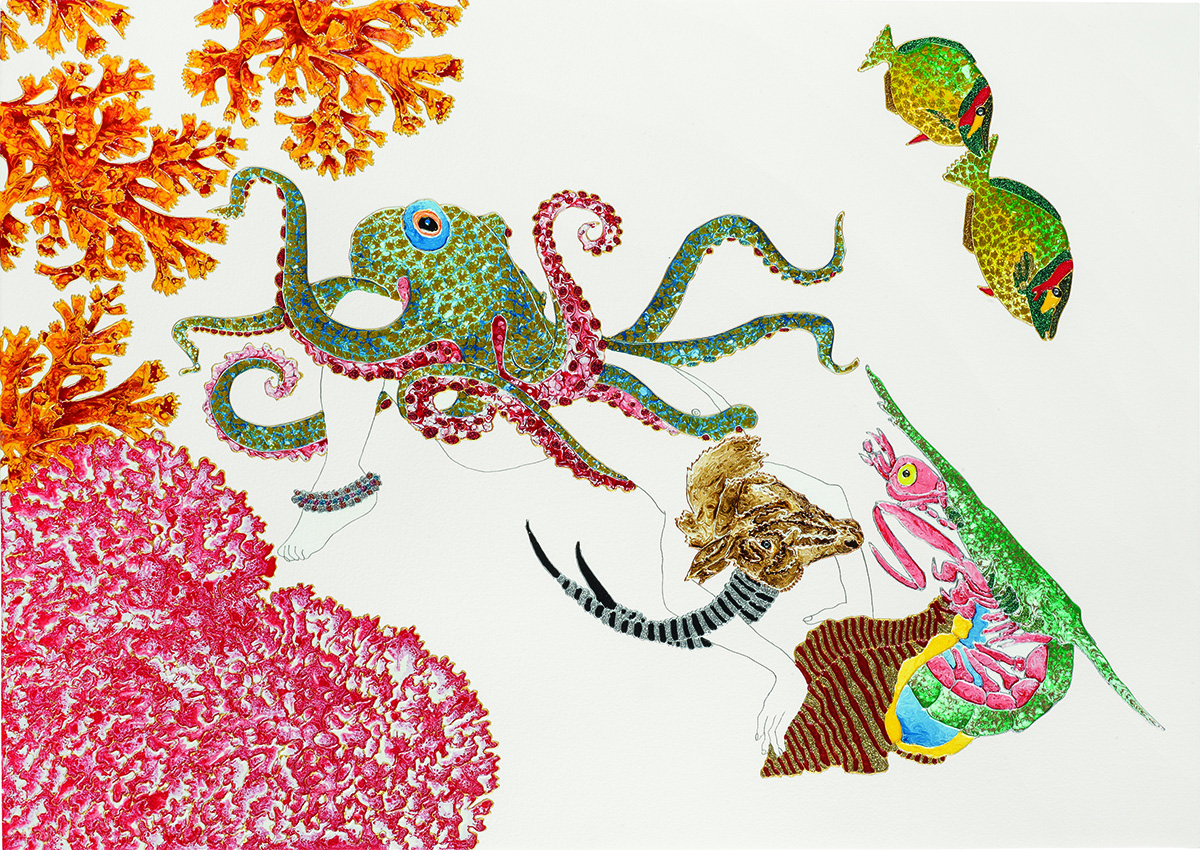
Untitled (2003) by Raqib Shaw, included in the exhibition ‘The World on Paper’;
That intent has informed Deutsche Bank’s revamp of the historic Prinzessinnenpalais, which Reichenbach describes as “a very exciting and challenging building that incorporates the whole history of Berlin”. Originally built in the mid eighteenth century, it was originally the home of Prussian princesses – including one who married the Russian czar. The palace was seized in the November Revolution of 1918 and suffered severe damage in World War II.
After the war, it was demolished, then rebuilt by the East German authorities, according to a design by Richard Paulick, who also oversaw the reconstruction of the neighbouring Staatsoper Unter den Linden. Paulick rebuilt the original Rococo façade but combined it with a modern interior made of steel and concrete. The Prinzessinnenpalais reopened in 1963 as the Opera Café. With a bar, wine tavern, grill restaurant and occasional disco, it developed into a hub for the East German progressive arts scene, and featured as a filmset in one of East Germany’s most successful movies, The Legend of Paul and Paula, from 1973. After German reunification, it became a café in the Rococo style known as the Opernpalais – its interior complete with painted marbled columns, fake stucco and thick floral carpets. The café, renowned for its sumptuous cakes, has now given way to a modern restaurant with an emphasis on healthy eating (though the cakes are still there, and still made by the same supplier). The chintzy 1990s décor is gone – instead, the Berlin architecture firm Kuehn Malvezzi has opted for a sleek, minimalist look for the PalaisPopulaire.
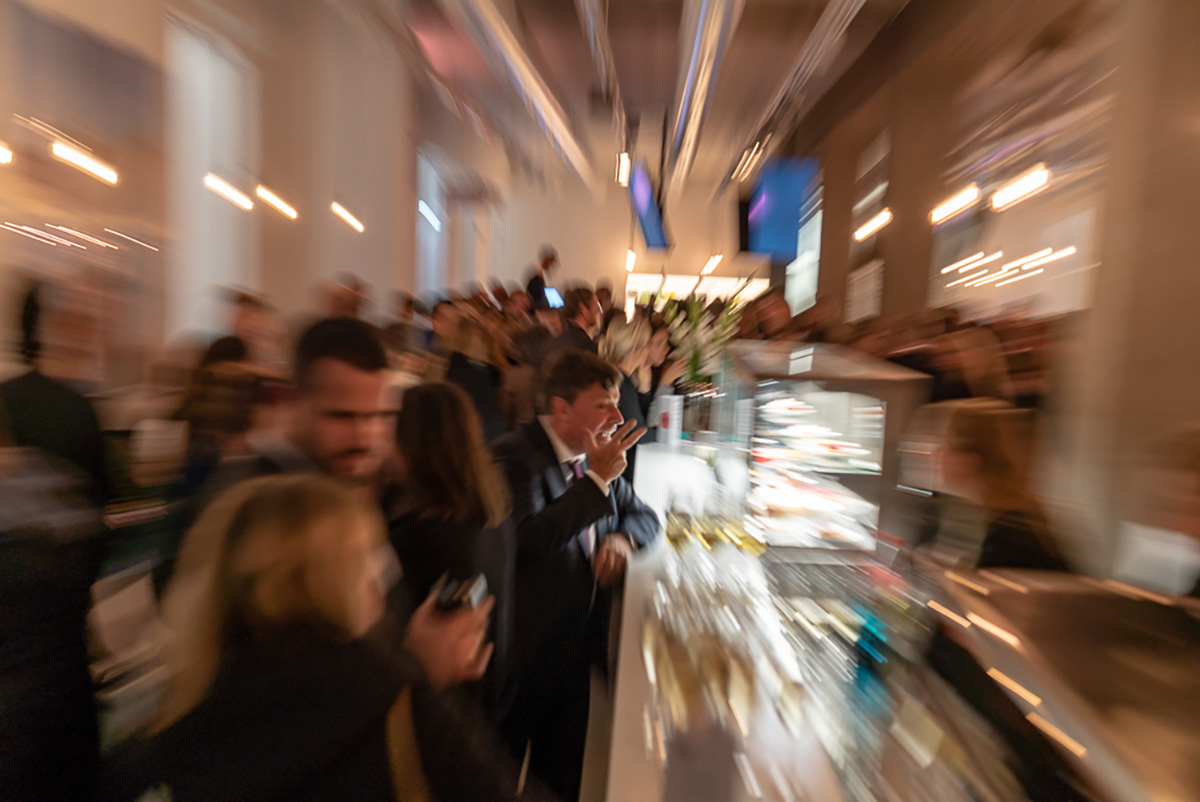
The PalaisPopulaire opening was timed to coincide with Berlin Art Week in September 2018
“Paulick created the Operncafe as a Berlin living room, a central space in the city with a view of the Neue Wache,” the guardhouse designed by the 19th-century Prussian architect Karl Friedrich Schinkel, says Wilfried Kuehn at Kuehn Malvezzi. “As a GDR architect, he was interested in the complexity of history. He was not a pure modernist, but one who referred heavily to history. From the outside, this architecture doesn’t betray what it is on the inside. It is a modern reinforced concrete structure in a Rococo wrapping, which provides a theatrical backdrop for the city.” From today’s perspective, “it is problematic to create a modern interior and then on the outside, give the appearance that it is a Rococo building, without making these contrasts apparent,” Kuehn adds. “We decided to make these contrasts visible by exposing the structure inside.”
Read more: President of LEMA Angelo Meroni on business with a soul
What Kuehn Malvezzi has done is return the interior to its modernist roots. The exposed concrete pillars and steel pipes, white walls and terrazzo floors lend a clean and austere aesthetic. “Nothing was left of Paulick’s décor on the inside, it was all gone,” Kuehn says. “There are few surviving photos and documents, so there is no record of the original, which meant that reconstructing Paulick’s interior would have been futile.” In fact, the palace at number five on Unter den Linden was completely gutted when Deutsche Bank took it over. “The classic Rococo façade is under heritage protection, but the interior isn’t, and that was very important to us as we wanted to put it to a completely new use,” Reichenbach says. “We wanted to be able to shape the rooms according to our needs. It was important to speak a very modern language inside, so that the visitors have the immediate feeling that they are in a modern institution, because our programme is focussed on the contemporary and the future.” An example of flexibility is an atelier on the top floor, which Kuehn says is designed to serve as an art workshop for children as well as a space for talks and lectures. Its windows offer views of the Prussian grandeur surrounding the Palais – the opera house, the Neue Wache, the rebuilt royal palace and two imposing red-brick churches.
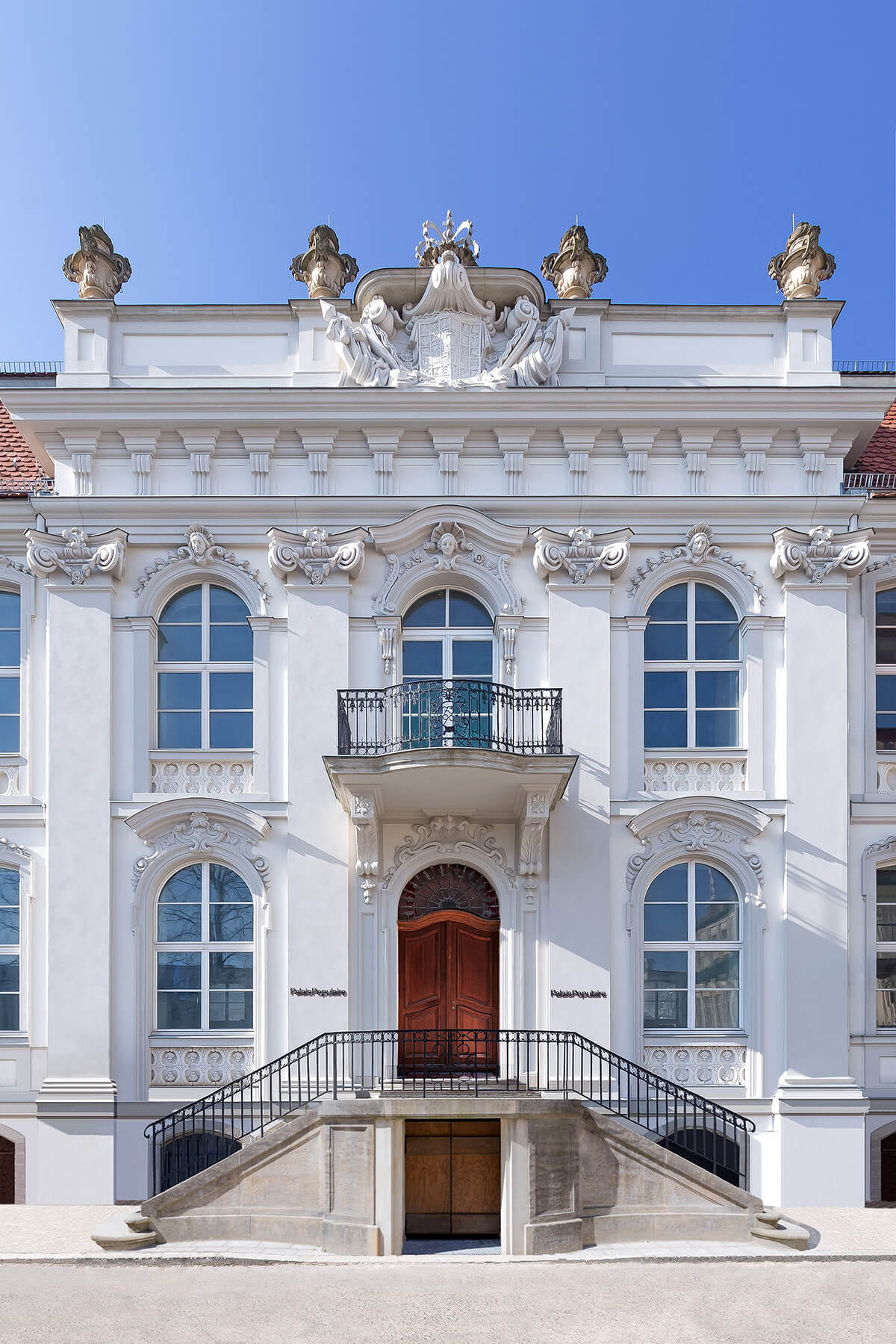
The PalaisPopulaire
Reichenbach says Deutsche Bank chose Kuehn Malvezzi as its architect because of the company’s track record in designing spaces for art – the firm’s previous projects include the building that houses the Friedrich Christian Flick Collection at the Hamburger Bahnhof museum of contemporary art in Berlin, and the privately owned Julia Stoschek Collection in Düsseldorf. Designing space for art comes with challenges – especially if a client’s emphasis is on openness and accessibility, Kuehn says.
“In a museum, art is unfortunately very hermetic, for several reasons,” he says. “Firstly because of security. Then the climate – it has to be protected. Third, you have to have a ticket area so you can’t give access from all sides of the building. Fourth, you have to give a pathway through the exhibition halls. If you were to have an open, permeable building, you wouldn’t meet these requirements. That’s why you need to generate permeability in the other spaces around the exhibition proper and create strong relations between these two contrasting spaces of a museum.” The firm achieved this sense of ‘permeability’ by creating access to the building from two sides and closing off the former entrance onto Unter den Linden to make a safe, enclosed space for art. A ramp leading up to the Palais from Bebelplatz gives a modern accent to the Rococo façade.
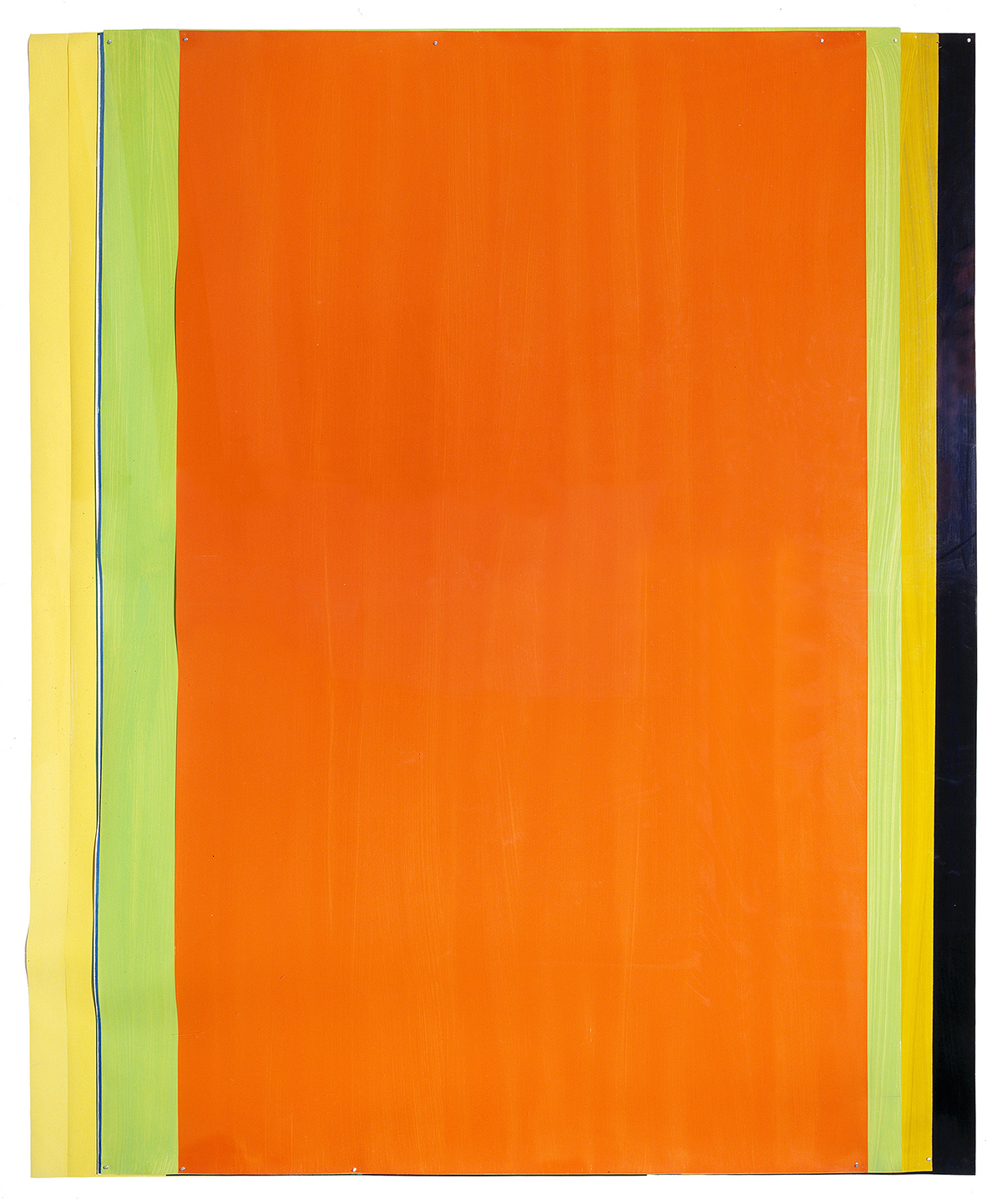
Works shown in ‘The World of Paper’ exhibition, included ‘Untitled’ (1995) by Katharina Grosse
In addition to its exhibition schedule – a permanent show of its own collection that will change every 11 months and a temporary show that will change three times a year – the Palais will also host DJ sets, concerts, and discussions with athletes, actors, writers and musicians. Yanna Schneider, a former taekwondo world champion, will give coaching to school children. One of PalaisPopulaire’s partners is Ben Scheffler, a 30-year-old expert in parkour, or freerunning, an athletic discipline that originated in gritty Parisian suburbs and entails leaping and climbing through an urban landscape. Scheffler will offer workshops for young people.
In the German cultural landscape, which is 90% funded by the state, the PalaisPopulaire stands out as a private arts venture, while the construction projects surrounding show how much public investment is currently being funnelled into Berlin’s cultural life and infrastructure. The State Opera house next door reopened in 2017 after a seven-year revamp; on Museum Island, the vast Humboldt Forum is to open in the Berlin Palace in 2019 and the Pergamon Museum is undergoing a major revamp. In addition, a new underground line connecting the main station to Alexanderplatz is set to open in 2020 – one of its stations will be just by the opera house and PalaisPopulaire. It’s an exciting time to be in Berlin.
For more information visit: db-palais-populaire.com
Humboldt Forum
One of the jewels in the crown of Berlin’s central urban redevelopment is the gigantic Humboldt Forum, just a stone’s throw from the new PalaisPopulaire. At a cost of €595 million (483 million of which is funded by the German government, with the rest from the city of Berlin and private donations) it has been described as “the visiting card of the nation” and “Germany’s most ambitious cultural project” by German culture minister Monika Grütters. Scheduled to open in 2019, like the Palais, the project involves the reconstruction and regeneration of an iconic Berlin landmark (in this case, a former Prussian royal palace) by the Italian architect Franco Stella.
Named after the Prussian naturalist and explorer Alexander von Humboldt and his polymath brother Wilhelm, when complete, it will offer a staggering 40,000 square metres of exhibition space, including Berlin’s non-European ethnological collections and Asian art collections, a permanent city history exhibition, several spaces for temporary exhibitions and the Humboldt Laboratory run by the university. With the aim of staging approximately 1,000 events annually for an audience of about three million visitors a year, it also promises to be free to the public.
This article was originally published in the Winter 19 Issue.








